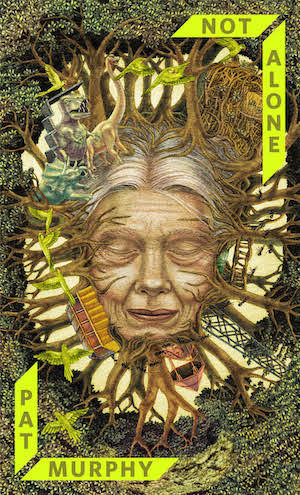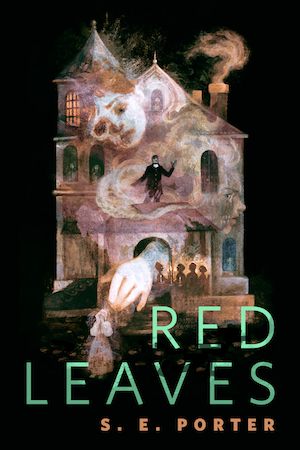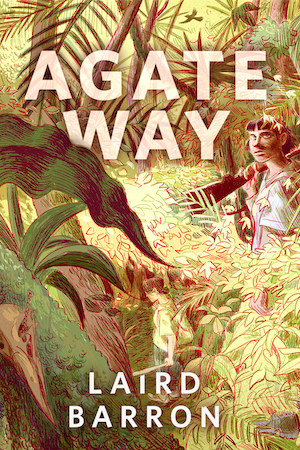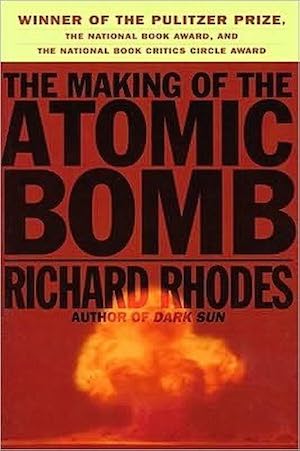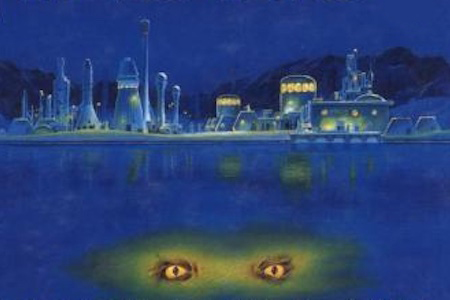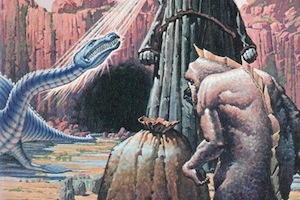In this bi-weekly series reviewing classic science fiction and fantasy books, Alan Brown looks at the front lines and frontiers of the field; books about soldiers and spacers, scientists and engineers, explorers and adventurers. Stories full of what Shakespeare used to refer to as “alarums and excursions”: battles, chases, clashes, and the stuff of excitement.
The ads for the new Christopher Nolan movie Oppenheimer had me thinking about the Manhattan Project, one of history’s most significant and controversial technological achievements. That, in turn, called to mind one of my favorite books of all time, The Making of the Atomic Bomb by Richard Rhodes. Every science fiction fan has non-fiction books that influence their thinking, and this is one of mine. Fiction is full of stories of individuals cobbling together new technology all on their own, but the reality is very different. Technological advances are usually due to the collective effort of many people, and this book is an excellent overview of how science theory becomes science fact. Moreover, it is also an important meditation on the ethics of technological advances, which can often bring dangers that outweigh their benefits.
The copy of the book I read for this review is the Touchstone trade paperback edition issued in 1988. It is a massive volume, nearly two inches thick, and weighing in at over two pounds. It started to pull itself apart as I read, the weight of the book being too much for the decades-old glue that held the spine together. When I decided to write about the book, because of its size, I thought that instead of a full reread, this time I might settle for “re-skimming” the book. But it is a testament to its quality that I read every word, despite all the distractions of summer happening around me.
In my youth, during the height of the Cold War, I was haunted and fascinated by the threat of nuclear war. The writers of both fiction and non-fiction in that era fed that fascination with tales of such a war and its aftermath, many of which I have reviewed in this column, including: Alas, Babylon, Damnation Alley, Heiro’s Journey, A Canticle for Leibowitz, The Long Tomorrow, and Armageddon Blues. The possibility of a war between nuclear powers felt very close, and I even got an aircraft identification guide so I would know if the planes I saw flying over my house were Soviet bombers (and have a chance to hide).
So, when I found The Making of the Atomic Bomb in a bookstore, I immediately bought it, and was captivated. No book I had ever read did such a good job of capturing the grand sweep of that program, and of making the intricacies of nuclear physics clear to the lay reader. It had a profound effect on my thinking regarding the topic of nuclear weapons. A few years ago, I reviewed Willy Ley’s book on the early space program, Rockets, Missiles, & Space Travel, and the comments indicated that a number of other science fiction readers recalled key non-fiction books that inspired their imaginations, especially when those books had first been encountered when they were young.
About the Author
Richard Rhodes (born 1937) is a journalist, historian, and author of both non-fiction and fiction. He had written several books before he received national attention with the 1986 publication of The Making of the Atomic Bomb, a book which won a Pulitzer Prize, the National Book Award, and a National Book Critics Circle Award. Rhodes has written biographies and history books on a wide variety of topics. He has also written many magazine articles, a play, and works of fiction, including four novels. The success of The Making of the Atomic Bomb led him to write a number of other books on topics related to nuclear weapons and energy, perhaps most notably Dark Sun: The Making of the Hydrogen Bomb. Rhodes was recently interviewed for the MSNBC special program To End All War: Oppenheimer and the Atomic Bomb, which aired earlier this month.
The Making of the Atomic Bomb
The book opens by introducing us to Leo Szilard, a lesser-known scientist who played an important role in the process. He was a bright Hungarian physicist who had impressed Einstein during his studies, and was now contemplating how bombardment of an atom with neutrons could lead to the release of other neutrons. Szilard then had an epiphany: the release of neutrons might bombard additional atoms, causing a chain reaction, which could also release energy. Rhodes establishes a pattern with this first chapter, using detailed descriptions of persons, places, and things to draw the reader in. And by delving deeply into the experiences of an individual person’s life, he gives us insight into their studies and discoveries, and also the political framework in which they lived. It is a format that makes the history being presented feel more vivid, immediate, and personal.
The narrative then shifts to the concept of atoms, and the pioneering work of New Zealand physicist Ernest Rutherford, whose work expanded contemporary thinking on sub-atomic particles and how atoms were constructed. As his story unfolds, the names of other scientists come fast and furious. Some of these will be revisited later in more detail, while some are just briefly mentioned in relation to an observation or discovery they might have made, or a device they might have invented. Through the eyes of Rutherford, we are introduced to the young Niels Bohr, the Danish scientist who would have a major impact on the world of physics. Bohr spent his career teasing out the nature of sub-atomic particles, and in doing so, built on pioneering work by Max Planck and Albert Einstein.
We are next introduced to German scientist Otto Hahn, and the narrative steers into what seems to be a digression into German politics and the First World War. We are drawn into a description of the horrors of that war, with its machine guns, more accurate artillery, poison gas, and the first aerial bombings. But it turns out this is not merely a digression—international politics and methods of warfare were just as critical to the development of atomic weapons as the science that underpins that development.
The narrative follows the many Hungarian scientists that fled the communist revolution that followed World War I, followed by a fascist takeover, becoming the first nation in Europe to fall to what soon became a political epidemic. Szilard was one of these, as were Edward Teller and John von Neumann. A frail young Robert Oppenheimer enters the story, falling ill as a teenager and sent by his father to New Mexico in hopes the Western climate will toughen him up. Oppenheimer went on to study at Harvard and then moved on to Cambridge, but while he was seen as a brilliant student, he was unhappy with his studies and lab work there, eventually completing his PhD in Germany. During the interwar years, scientific ideas were emerging and developing at a rapid pace, with the findings of one scientist inspiring new possibilities and directions of thought in many others, an intellectual analog for the atomic chain reactions they were studying. The section describing this cascade of “eureka” moments was my favorite part of the book.
Rhodes introduces us to the machinery of physics and devices like mass spectrometers and particle accelerators. We meet more scientists, notably the German physicist Werner Heisenberg and Italian physicist Enrico Fermi. The rise of Hitler and the Nazis begins to impact politics in Europe. Because many of the best physicists of the time were Jewish, the anti-Semitic actions of the emerging fascist governments resulted in a steady flight toward safe havens such as England and the United States (the irony of anti-Semitism strengthening the enemies of the fascists cannot be overstated). And in a major breakthrough, Niels Bohr found that an isotope of uranium, U-235 (not uranium itself), when bombarded with neutrons would split and, instead of releasing neutrons, would release energy. This was immediately seen as not only a source of power, but also a possible means of creating incredibly powerful explosions.
As war was breaking out in Europe, scientists in America began to consider voluntary secrecy, not publishing some of their findings, and approaching the government to suggest more research on the topic. With so many fleeing the Nazis, and with Germany long having been a center for physics and engineering, many scientists were terrified by the idea of Adolph Hitler gaining and wielding the power of atomic weapons. The politically minded Leo Szilard was central in this effort, which culminated in a famous letter from Albert Einstein to President Roosevelt. And after a few bureaucratic hiccups and delays, objections were swept aside as World War II exploded across Europe, Pearl Harbor was attacked, and the US fully committed to an effort to build the atomic bomb. On December 2, 1942, an effort led by Enrico Fermi (who had left fascist Italy for America), using a lattice of uranium and graphite bricks, pulled neutron-absorbing control rods from the device, and the first atomic chain reaction was initiated. Scientists also discovered that neutron bombardment could transmute uranium into a new element, plutonium, which could be split like uranium and thus was another candidate for bomb production.
Rhodes describes how concerns about German efforts turned out to be overblown. The German project had mistakenly decided that graphite was not a good material for moderating reactions, and they put their focus on “heavy water,” a substance in which the hydrogen atoms have an extra neutron attached. Commando and sabotage efforts by the Allies, though, kept the German scientists from using the heavy water they needed, and their efforts stalled out, especially after the Allies began to turn the tide of the war and carry the fight back to Europe. At the same time, while they were aware of the possibilities of fission, Japanese and Russian efforts never progressed beyond initial research.
Rhodes shows us how the Department of War was put in charge of the “Manhattan Project,” named after the location of its engineering headquarters. After some organizational shuffling, an Army Corps of Engineers general, Leslie Groves, was put in charge. He was the perfect man for the project, pugnacious and driven, with a good head for details. Many scientists were resistant to military leadership, but Groves won most of them over, and brought something they had never seen to the table: nearly limitless funding. One of the scientists working on research, Robert Oppenheimer, was picked to lead the team who would design and build the bomb. While he was a brooding and introspective character, he also impressed the scientists as one of the best minds in the room. He also had a way of managing people that many of his (often eccentric) counterparts lacked. The project needed an out-of-the-way place to build and test the bombs, and Oppenheimer’s youthful experience in New Mexico helped inform the site selection; their laboratory was built in Los Alamos. They figured that a weapon would need only a few kilograms of either U-235 or plutonium, and started work on how to bring that material into a critical mass and trigger the chain reaction.
However, Rhodes shows that the Los Alamos laboratory was just the tip of a giant iceberg. Separating U-235 from U-238, and creating plutonium, was easier said than done. Only tiny amounts had been isolated to date, and creating even small amounts of material required huge industrial plants that would be built from scratch to handle highly radioactive materials. That necessitated unprecedented levels of automation on the production lines, difficult in the days before computers and robotics. Two plants were built, one in Richland, Washington, and the other in Oak Ridge, Tennessee. The task was daunting, as the chemical differences between the isotopes was miniscule. A range of procedures were tested and implemented, with a lot of trial and error along the way.
Buy the Book
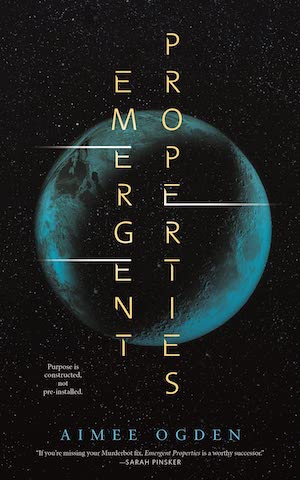

Emergent Properties
Eventually, the narrative shifts back to Los Alamos. The bomb makers developed a gun mechanism that would shoot one subcritical mass into another to trigger the explosion. They also considered an implosion method of squeezing the bomb core into a critical mass. They initially abandoned the implosion mechanism until they found the gun mechanism only worked with uranium and not plutonium. So, they went back to the drawing board and came up with a workable implosion mechanism. They completed a uranium bomb they nicknamed Little Boy, which they felt confident could be deployed without testing. And they successfully tested an implosion-type plutonium bomb at their Trinity test site. Another plutonium bomb, nicknamed Fat Man, was prepared.
Rhodes describes the disappointment of the scientists as they learned that they would be given little voice in the decision over if, when, and how the bombs would be deployed, and the fact that the politicians making such decisions considered them naive. He also follows the selection of the bombing crews for the mission, the modification of their B-29s to handle the massive bombs, and the tactics they developed to escape after dropping the bombs. The narrative then shifts to the victims of these bombings, as Rhodes describes the impact of dropping Little Boy on Hiroshima and Fat Man on Nagasaki, first through eyewitness accounts, and then through scientific studies. If this section of the book doesn’t break your heart, nothing will. There follows an epilogue that gives some subsequent history of nuclear weapons and their impact on world politics. Written when the Cold War was at its height, the book is pessimistic about the possibilities of avoiding nuclear war without a turn away from nationalism.
The book is remarkably detailed, and does a great job making complex issues seem simple. It also brings to life the many people who were involved in designing, building, and deploying the atomic weapons, and does not flinch away from showing the horrible impact of their creations. In doing so, Rhodes shows that in science, while individuals are important, progress is often the result of collective effort.
Final Thoughts
Like many people, I’m looking forward to seeing the new movie Oppenheimer. But while I watch it, I will know that the focus of the movie is only the tip of the iceberg, just a small slice of the gigantic effort that produced atomic weapons. Those who want a better understanding of that effort, and how science becomes reality, should read The Making of the Atomic Bomb. Even though it was written almost forty years ago, it remains one of the best and most complete descriptions of the entire Manhattan Project and the scientific developments that led to it (the book didn’t win all those awards for nothing).
Now, if you’ve read The Making of the Atomic Bomb, I’d love to hear your thoughts. If you have recommendations on any other books on the Manhattan Project, or other non-fiction science books you have appreciated, I’d enjoy hearing those, as well. And if you want to comment on the new movie, I wouldn’t mind that either.


